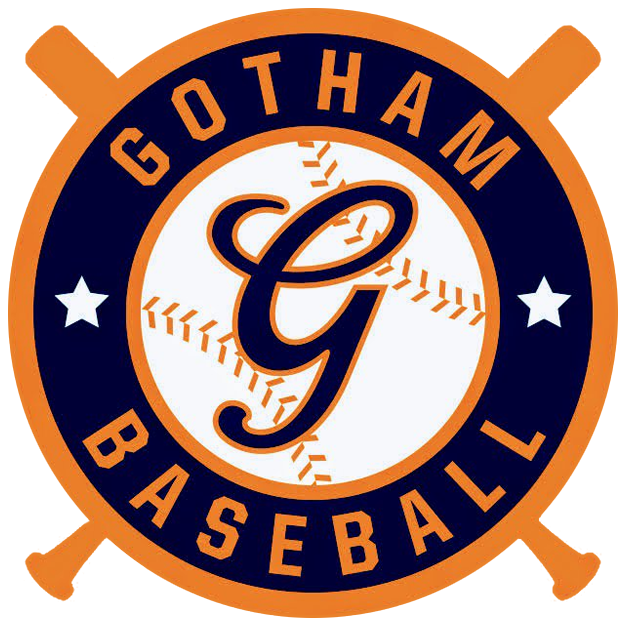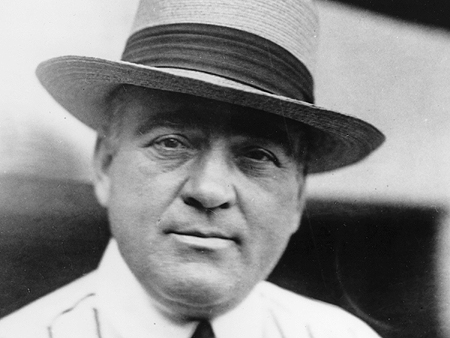On Jan. 23, 1939, the New York Yankees elected longtime General Manager Edward Barrow as the club’s president. Barrow replaced principal owner Colonel Jacob Ruppert, who had died four days earlier. Barrow will remain as the Yankees President until 1945, when the team is bought by new co-owners Dan Topping, Larry Mc Phail and Del Webb from the Jacob Ruppert Estate. The following piece first appeared in the Summer 2006 issue of Gotham Baseball magazine. It has been updated and added to over the years, but remains true to its original intent; to illustrate what Barrow meant to the Yankee franchise.
“I say there has never been a smarter baseball man than Mr. Barrow. He knows what a club needs to achieve balance, what a club needs to become a pennant winner. I, perhaps, can judge the part; but Mr. Barrow can judge the whole.”
Branch Rickey
The acquisition of Babe Ruth by the New York Yankees is the signature moment in sports.
When the Yankees secured his services from Boston following the 1919 season, they were a 16-year old franchise with a reputation for finding new ways to screw up pennant races, Or at least that’s what New York’s American League entry — then known as the Highlanders — did when they were competitive, which most of the time they were not.
However, that all changed when Ruth arrived. The Bambino made the Yankees matter, and then he helped them become baseball’s Roman Empire.
However, despite his magnitude as the single greatest player in baseball history, his impact on the Yankees would not have been quite as dramatic had Colonel Jacob Ruppert not followed up his trade for Ruth with the acquisition of then-Boston skipper Ed Barrow to be baseball’s first-ever General Manager after the 1920 season.
Though he loved the game as a child, Barrow turned to business first as a young man. A failed soap business, a better stint managing hotels, and other more mundane pursuits were no match for baseball. First, as a ballpark concessionaire, then serving in leadership positions for various minor league teams, he became a respected baseball man. He then became president of Eastern League in 1910 and after a stint as the skipper in Detroit was named manager of the Boston Red Sox in 1918.
After winning the World Series in his first year as the Red Sox skipper — the last the Red Sox would win until 2004 — Barrow changed baseball forever in 1919, when he made the decision to allow Ruth – the premier left-handed pitcher in his day – to become an everyday player to take advantage of his Herculean power.
Barrow was adamantly against the Sox moving Ruth to the Yankees following Boston’s 66-71 season in 1919, and the Boston media – which whined and opined for decades about how stupid and gullible Boston owner Harry Frazee was – actually applauded the move in some circles. When the Yankee owners then asked for Barrow to join their club as a front office man the following season, Frazee happily complied. Which move was worse?
That snickering soon changed to uneasiness and then horror, as Barrow picked the Red Sox clean for the next half decade, adding Waite Hoyt, Herb Pennock; shortstop Everett Scott and third baseman Joe Dugan in several one-sided deals that made the Yankees powerful.
When the Yankees won their first World Series championship in 1923, half of their starting nine and five of their six best pitchers were ex-Boston players.
For 25 years, Barrow acquired talent, traded away suspects for other team’s gems and built a farm system that was the pride of the baseball. He found talent everywhere and anywhere, plucking Lou Gehrig from Columbia, and kept a keen eye on minor league clubs not affiliated with New York, outmaneuvering every team in baseball for the services of Hall-Of-Fame players Tony Lazzeri, Lefty Gomez and Joe DiMaggio. He also discovered, trained and handed the torch to another Hall of Fame GM in George Weiss, who would go on to win even more championships than Barrow did.
In fact, he was right about pretty much everything. Well, maybe he was wrong once or twice.
“[Night baseball] is just a fad,” Barrow said when word got out in 1934 that Lee MacPhail’s Reds were planning on putting up lights at Crosley Field. “It’ll never last after the novelty wears off.”
Or when the rumors were running rampant that the flamboyant MacPhail was in talks to buy the Yankees?
“Only over my dead body will (Larry) MacPhail buy the Yankees.” said Barrow, who to his dismay, didn’t have enough cash to fend off MacPhail’s purchase and was kicked upstairs for the final few years of his time with the Yankees.
Though his brilliant tenure ended in annoyance – MacPhail was as erratic as he was clever – Barrow built an empire that still stands.
So, while history may remember that Billy Beane was a genius at drawing blood from a stone, or that for 14 seasons John Schuerholz had an unnerving ability to find the one guy that had just enough left to beat those New York Mets just one more time, Barrow will stand alone as the greatest general manager of not only his time, but of all time.
Before Moneyball, MLB Trade Rumors and Baseball Tonight, there was Barrow. The man that really changed baseball.
If you’d like to learn more about Ed Barrow, read the incredible book by Dan Levitt, Ed Barrow: The Bulldog Who Built The Yankees’ First Dynasty


[…] This post was mentioned on Twitter by Gotham Baseball, Gotham Baseball. Gotham Baseball said: The Dynasty That Barrow Built http://j.mp/flRy8Q #yankees #baseball #HOF […]